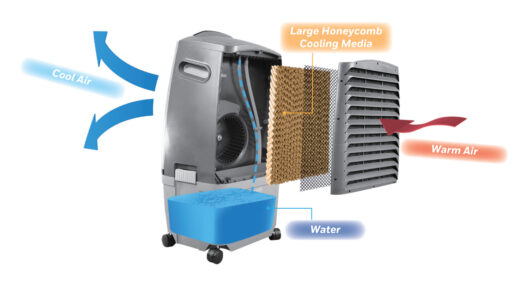Global warming is a pressing issue, a consequence of anthropogenic activities that has far-reaching implications for our planet. As carbon emissions rise, so too do global temperatures. The challenge we face today is not merely theoretical; it manifests in erratic weather patterns, rising sea levels, and increased frequency of extreme weather events. Consequently, the question arises: *How can we get rid of global warming? Is it actually possible?* This inquiry merits rigorous scrutiny.
First, understanding the roots of global warming is paramount. The primary driver of climate change is the increase of greenhouse gases in the atmosphere, particularly carbon dioxide (CO2) and methane (CH4). These gases trap heat from the sun, creating a “greenhouse effect” that raises Earth’s temperature. The combustion of fossil fuels for energy, deforestation, and industrial processes are the principal contributors to this alarming trend. Addressing these activities must be our first course of action.
Transitioning from fossil fuels to renewable energy is one of the most effective strategies to combat global warming. Solar, wind, hydro, and geothermal energy sources present viable alternatives that are more sustainable and less damaging to the environment. Investment in renewable technologies not only mitigates greenhouse gas emissions but also spurs economic growth and job creation. For example, the International Renewable Energy Agency (IRENA) estimates that the renewable sector could provide millions of jobs globally by 2030.
Moreover, energy efficiency plays a critical role in reducing our carbon footprint. By optimizing energy use in households, industries, and transportation, we can significantly cut down emissions. Implementing more stringent energy efficiency standards, retrofitting existing buildings, and developing smarter infrastructure are crucial steps in this direction. Innovations in technology, such as energy-efficient appliances and electric vehicles, demonstrate the potential for transformative change.
However, technological solutions alone are insufficient. Societal engagement is a vital component of addressing climate issues. Public awareness campaigns can foster a culture of sustainability, promoting behaviors that reduce carbon emissions on an individual level. Simple gestures like using public transport, reducing meat consumption, and minimizing waste can collectively have significant impacts. As individuals make more conscientious choices, it creates a ripple effect, influencing communities and policy-makers to prioritize climate action.
While individual actions are essential, systemic change at the governmental level is imperative. Policymakers must enact robust environmental regulations that limit carbon emissions and incentivize green energy sources. For instance, establishing a carbon tax can discourage fossil fuel use while generating revenue for renewable projects. Additionally, international cooperation through agreements such as the Paris Accord is crucial, as climate change knows no borders. Countries must commit to reducing their emissions collectively to achieve a substantial impact on a global scale.
Forestation and reforestation also offer a natural mitigation strategy for combating global warming. Trees are powerful carbon sinks; they absorb CO2 from the atmosphere and store it as biomass. Restoring degraded forests and expanding urban green spaces can significantly counterbalance emissions. Furthermore, preserving existing forests is vital, as they provide habitat for biodiversity and maintain ecological balance. Investing in reforestation initiatives not only fights climate change but also contributes to local economies and enhances community well-being.
Another innovative approach to mitigating global warming involves utilizing carbon capture and storage (CCS) technologies. CCS captures CO2 emissions from power plants and industrial processes before they enter the atmosphere. Once captured, CO2 can be stored underground in geological formations or utilized in various applications, such as producing building materials. While these technologies are still developing, their potential could prove revolutionary in our battle against climate change.
To pique curiosity further, consider the role of nature-based solutions in combating global warming. By harnessing natural processes, such as wetland restoration and soil management, we can enhance carbon sequestration. These methods are often cost-effective and promote biodiversity, making them attractive alternatives to more conventional technological solutions. Moreover, they empower local communities, aligning climate action with social equity and resilience.
However, it is paramount to approach global warming with a degree of realism. While it is imperative to pursue every viable avenue for reducing emissions and adapting to climate realities, we must also acknowledge that completely eradicating global warming is an intricate challenge. The notion of “getting rid of” global warming may be overly simplistic. Instead, we must aim for stabilization—keeping global temperature rises below critical thresholds, promoting adaptation strategies, and building resilient systems that can withstand climate impacts.
Thus, educational initiatives are vital in cultivating a sense of urgency and agency among individuals and communities. Understanding the multifaceted nature of global warming empowers people to advocate for change and implement sustainable practices in their daily lives. The pursuit of knowledge can unlock a transformative mindset, fostering innovation and encouraging collaboration toward common goals.
In conclusion, while the complexity of global warming presents daunting challenges, the possibilities for solutions are equally vast and nuanced. Renewable energy adoption, enhanced energy efficiency, innovative carbon capture technologies, and nature-based solutions offer a multi-pronged approach to addressing this critical issue. Through collective action, policy reform, and a shift in societal perspectives, we can navigate this pivotal moment. It is within our capabilities to mitigate, adapt to, and ultimately stabilize the effects of global warming, ensuring a sustainable future for generations to come.






